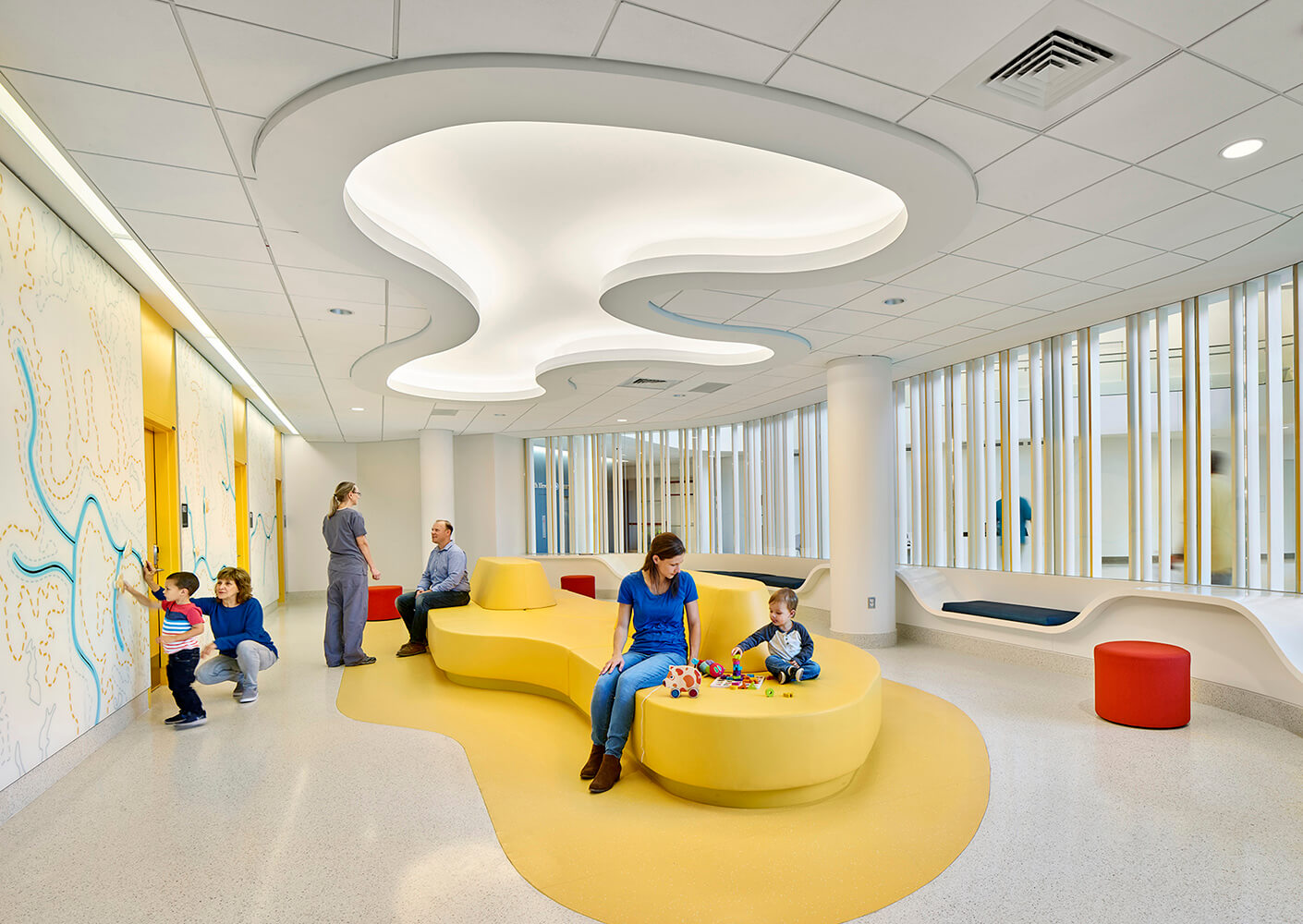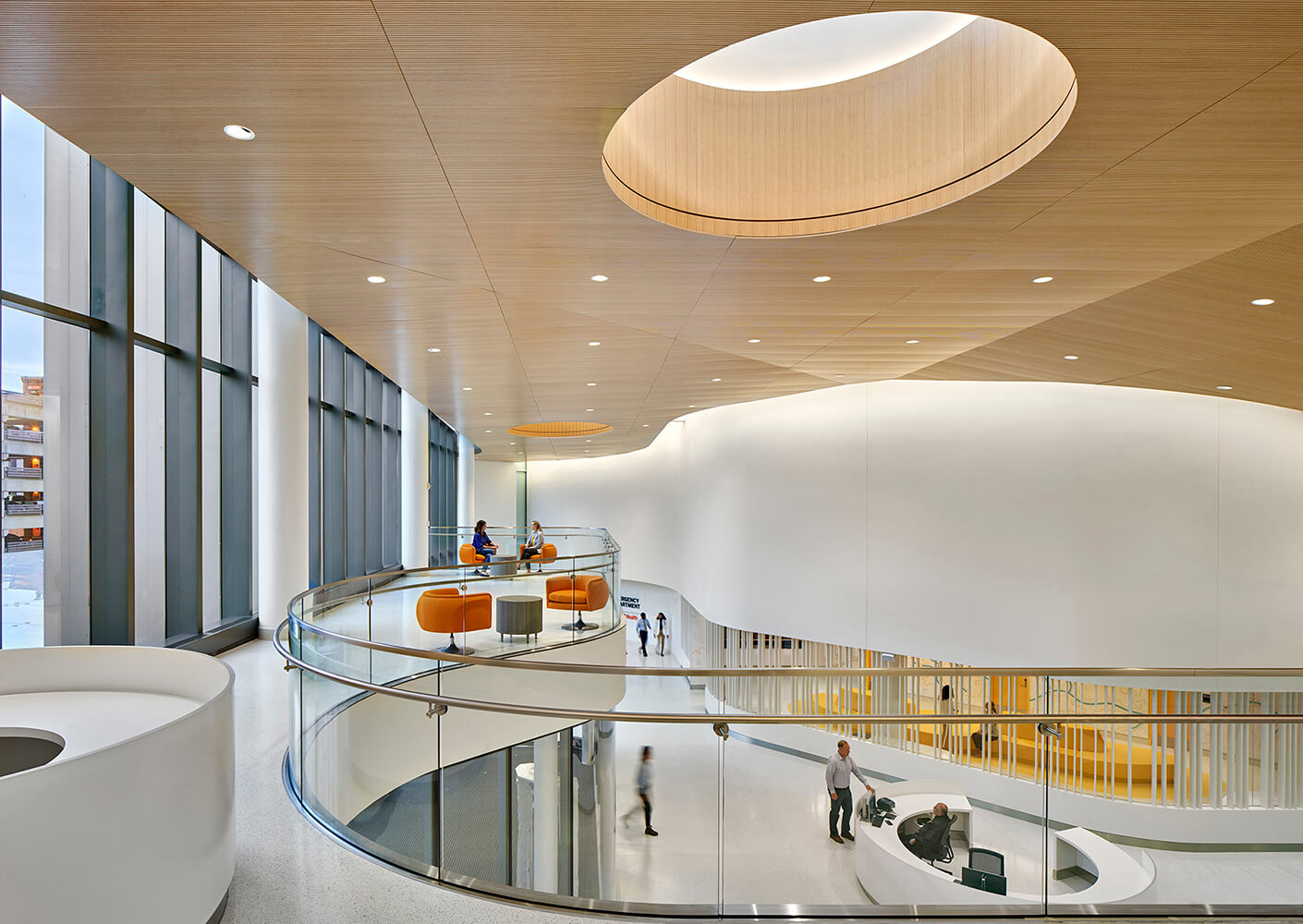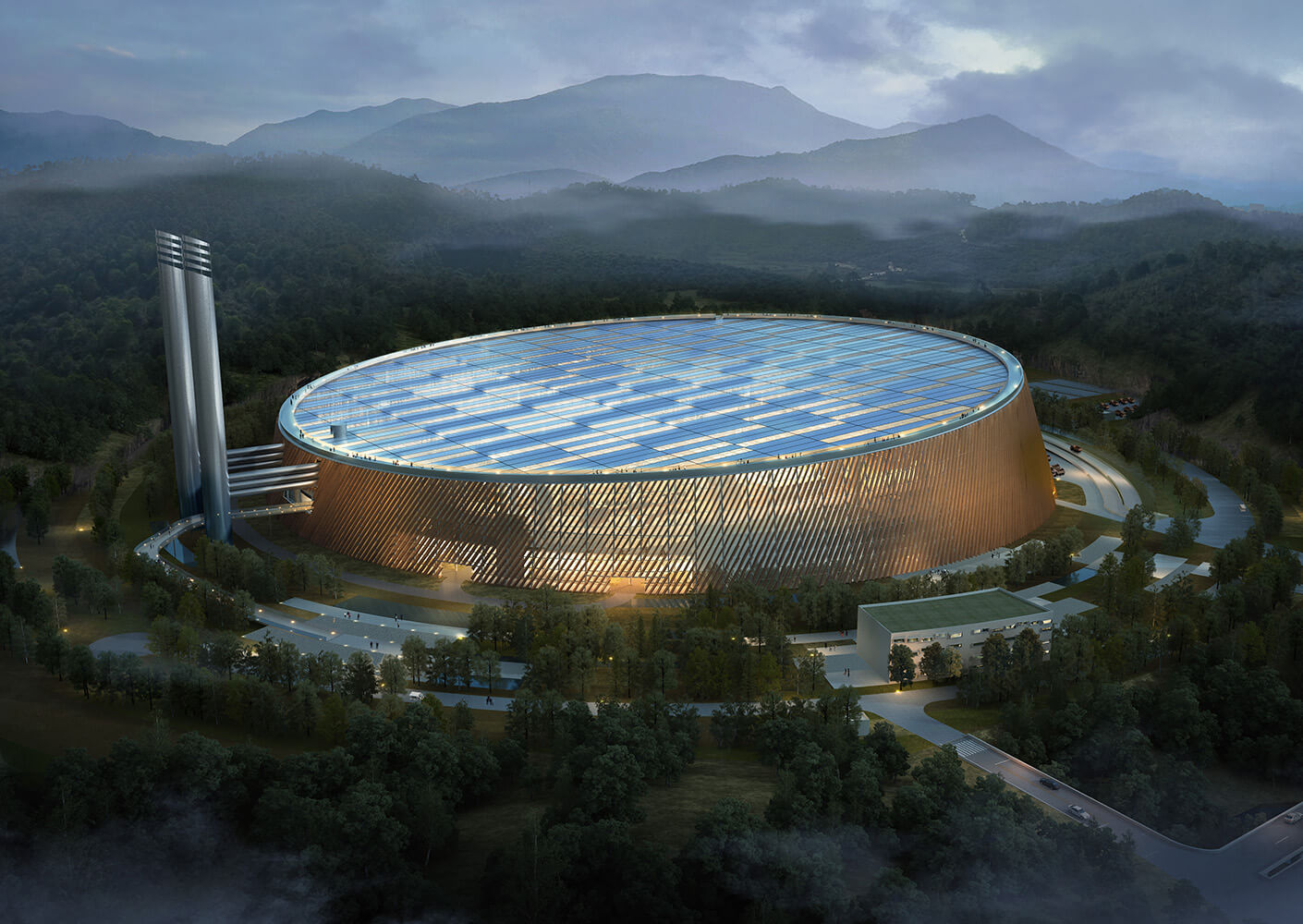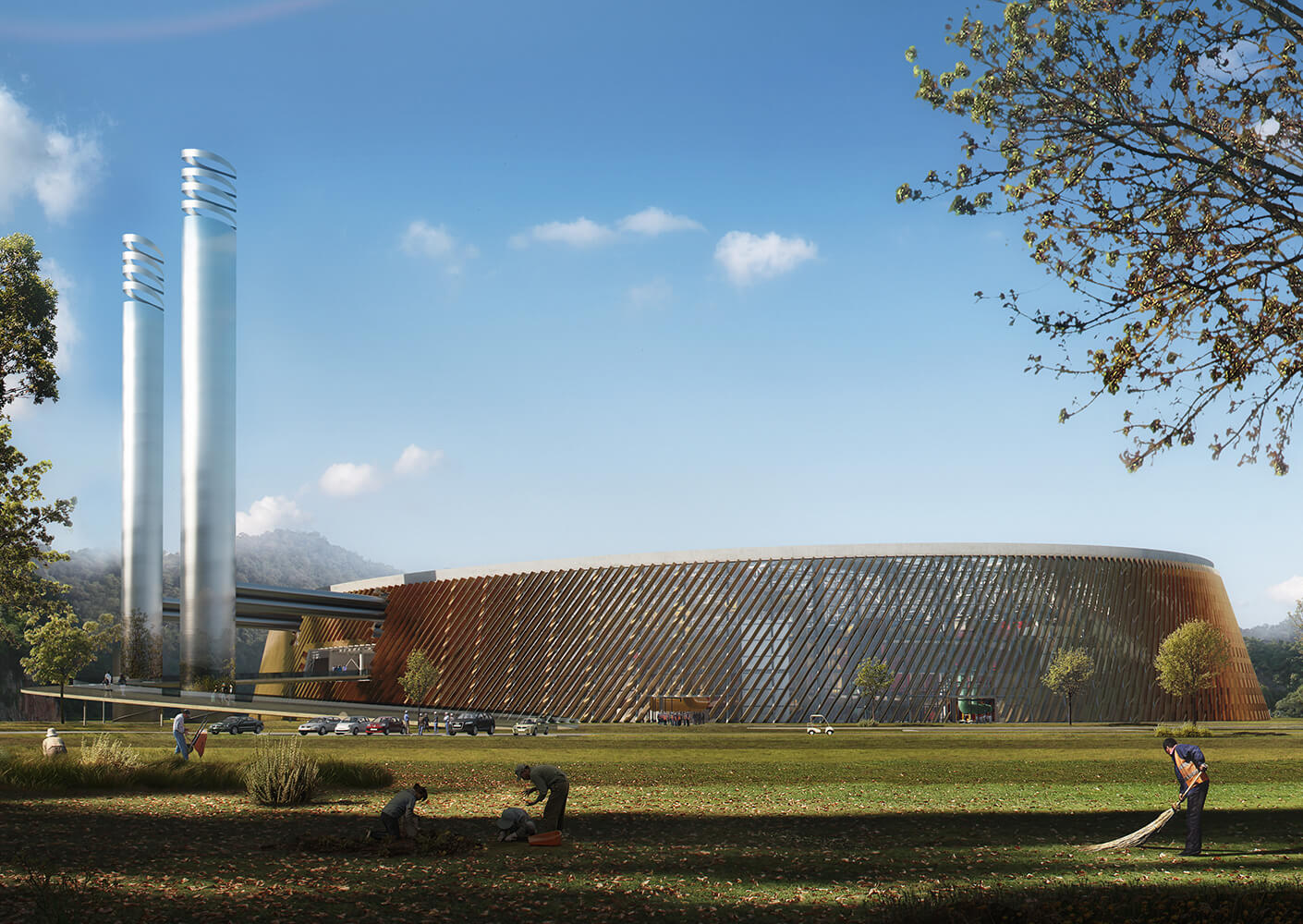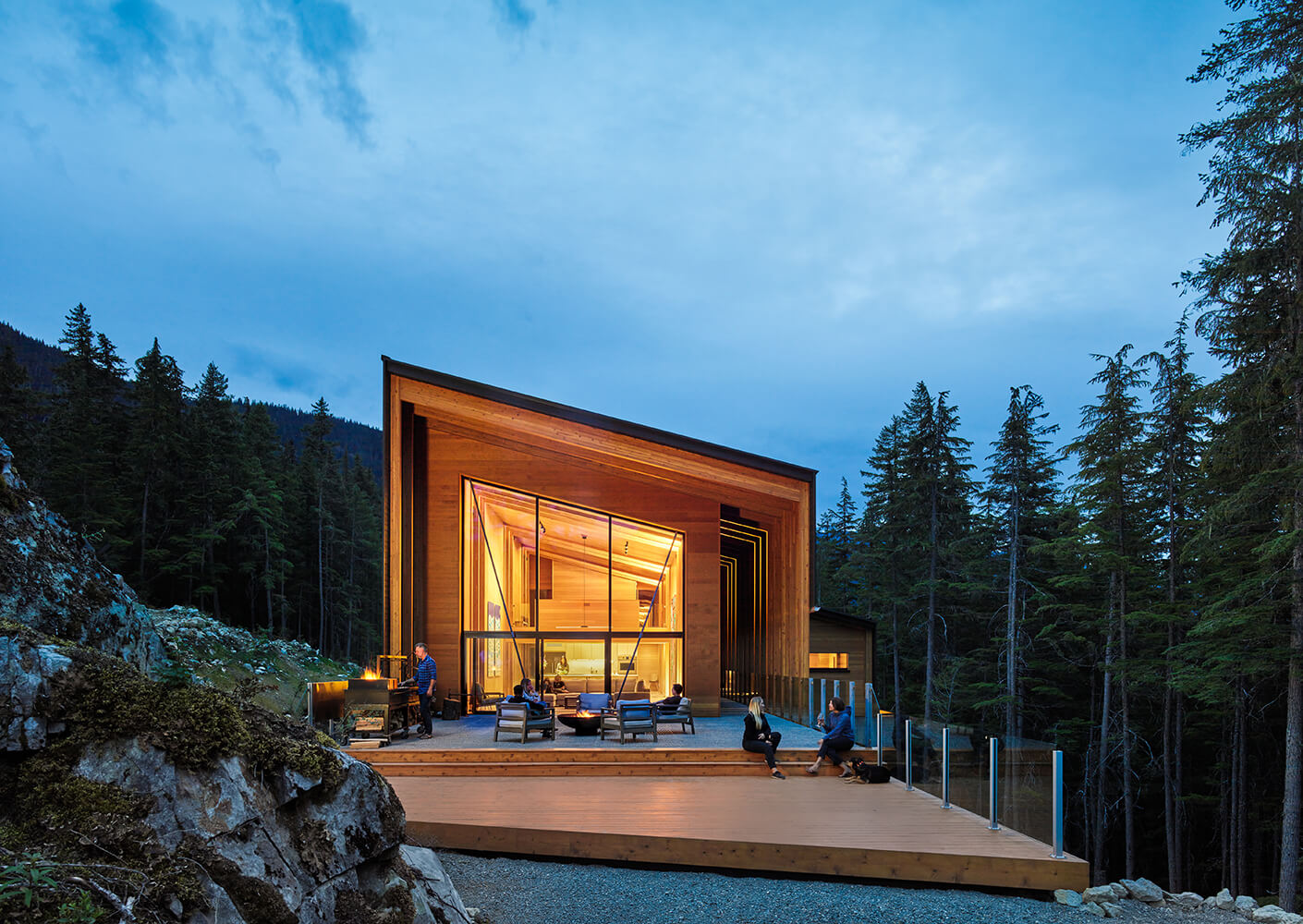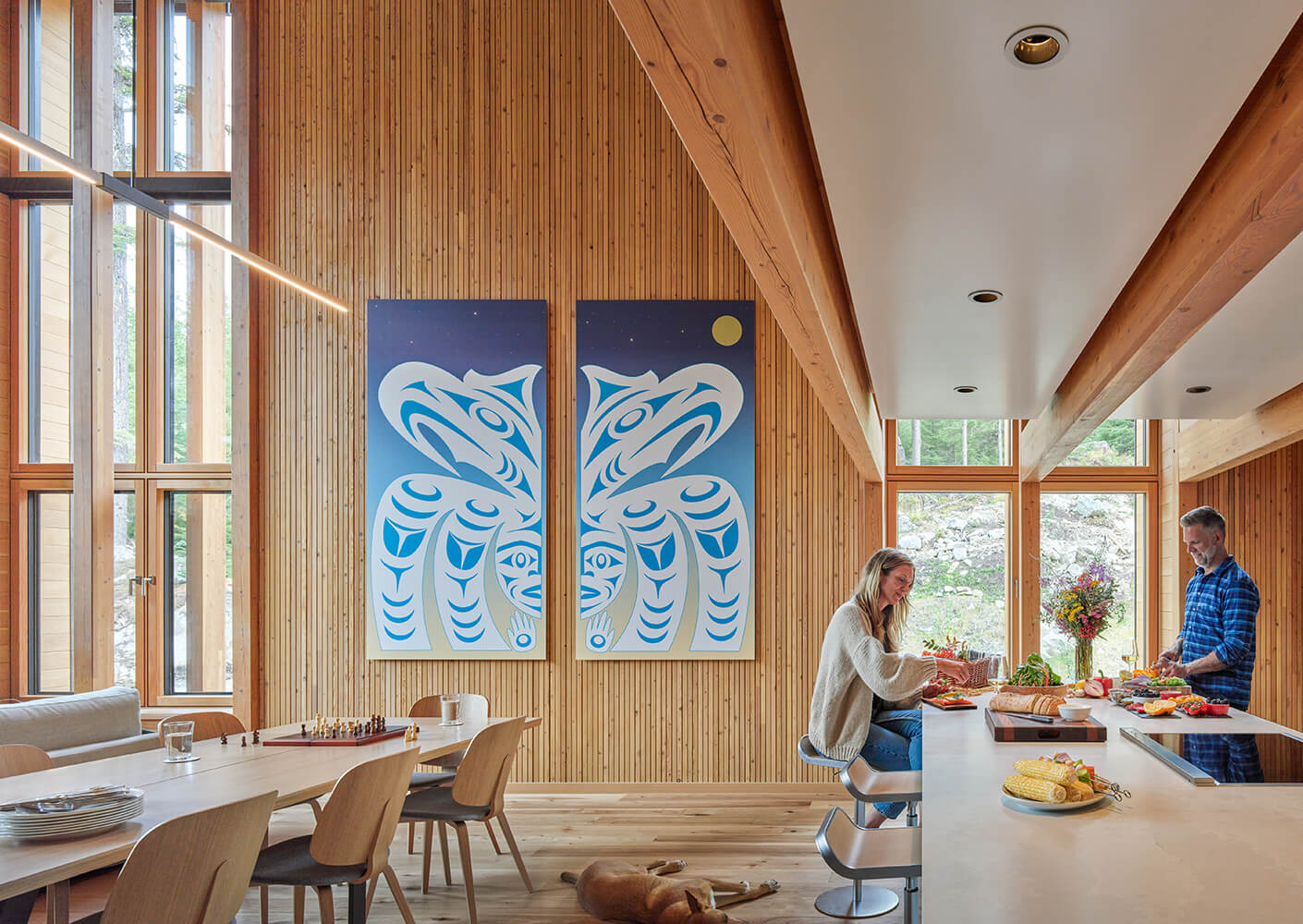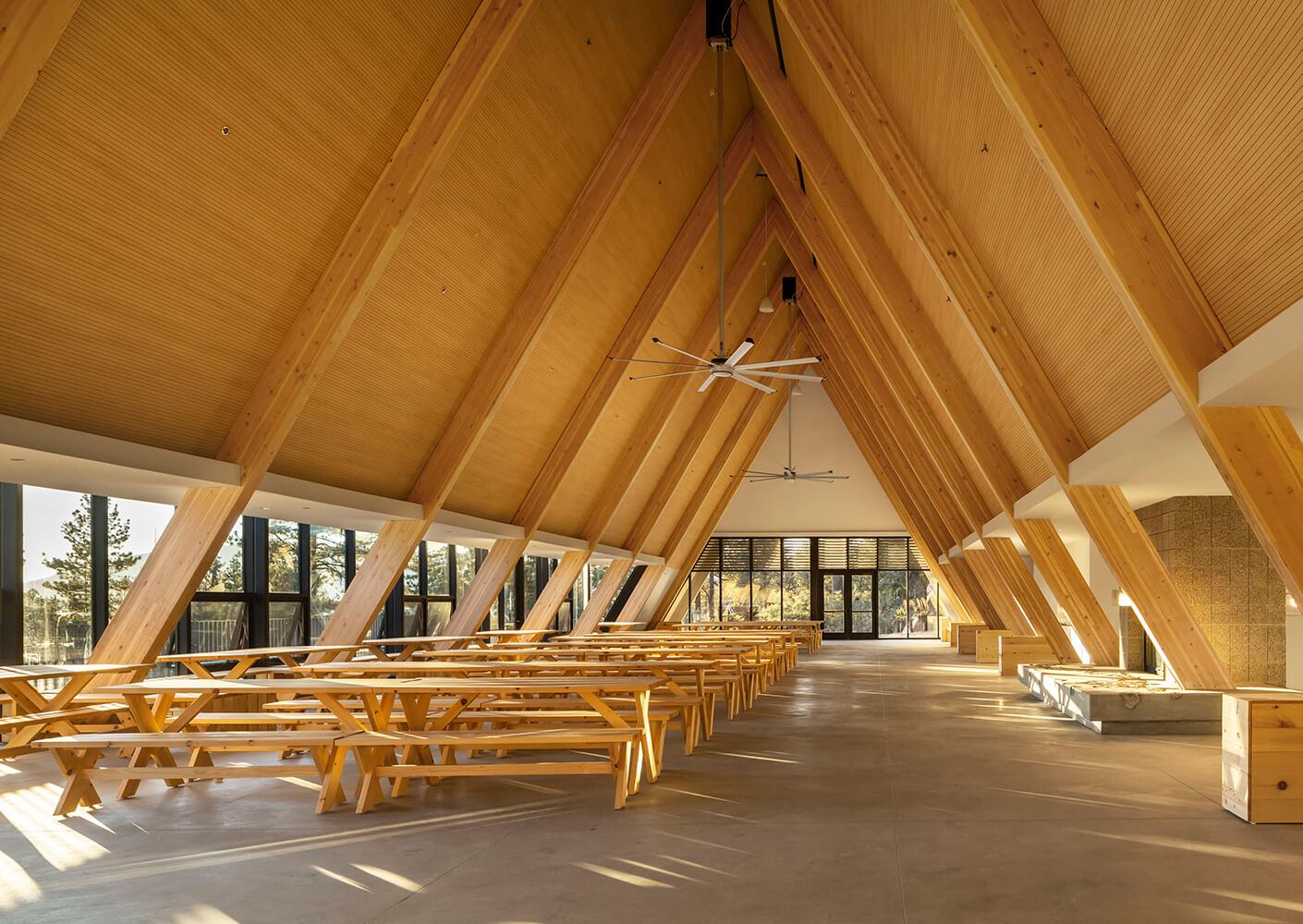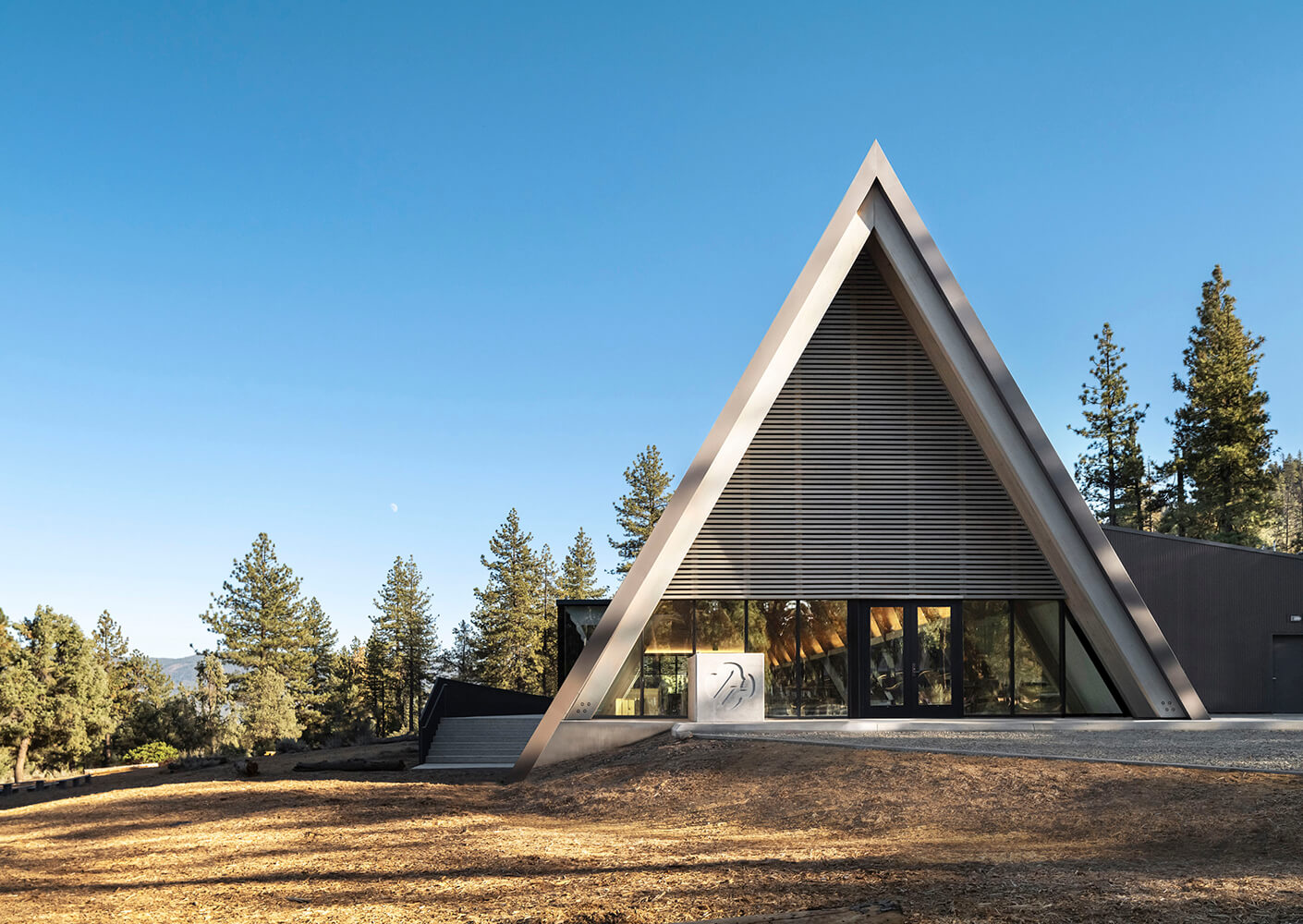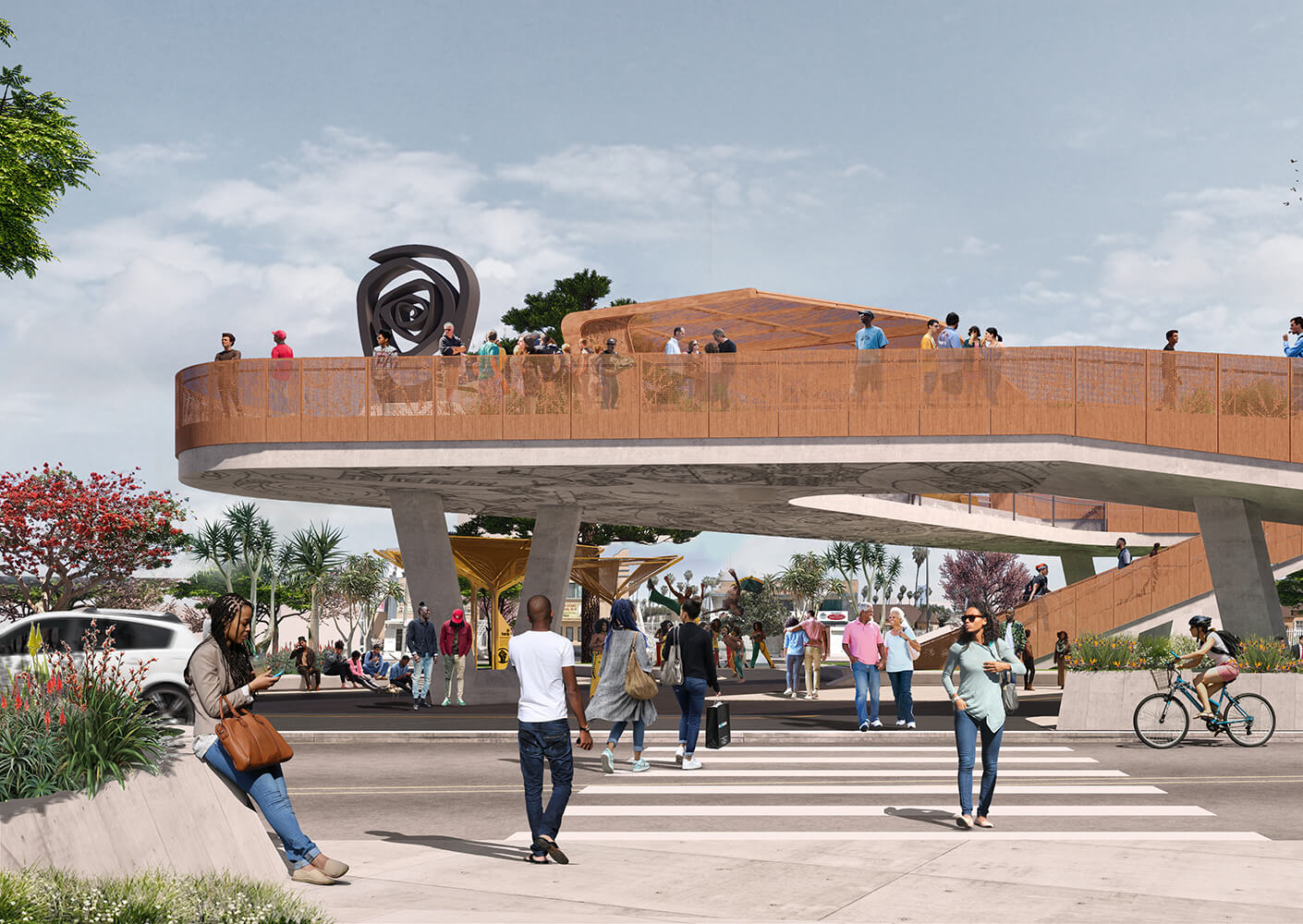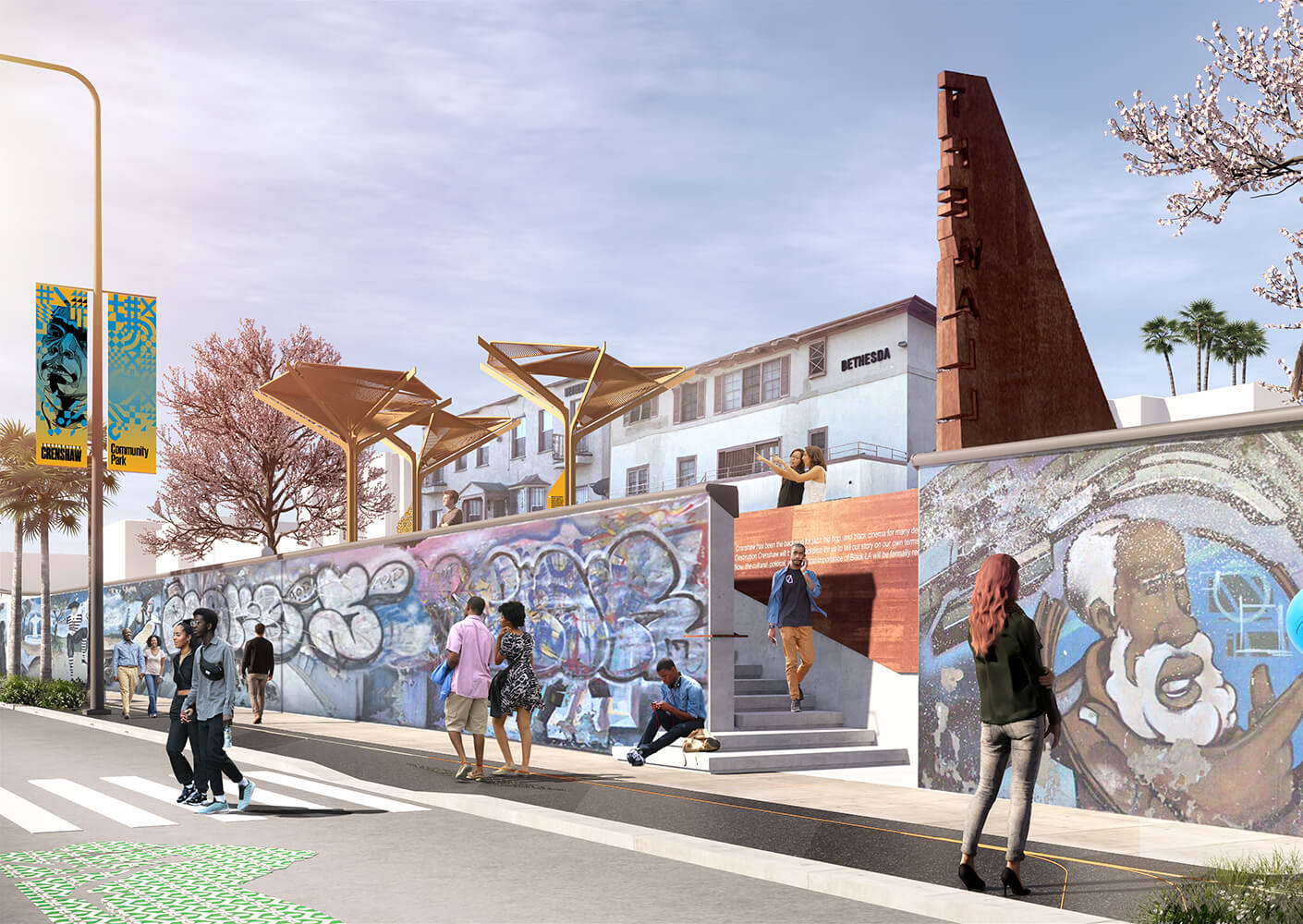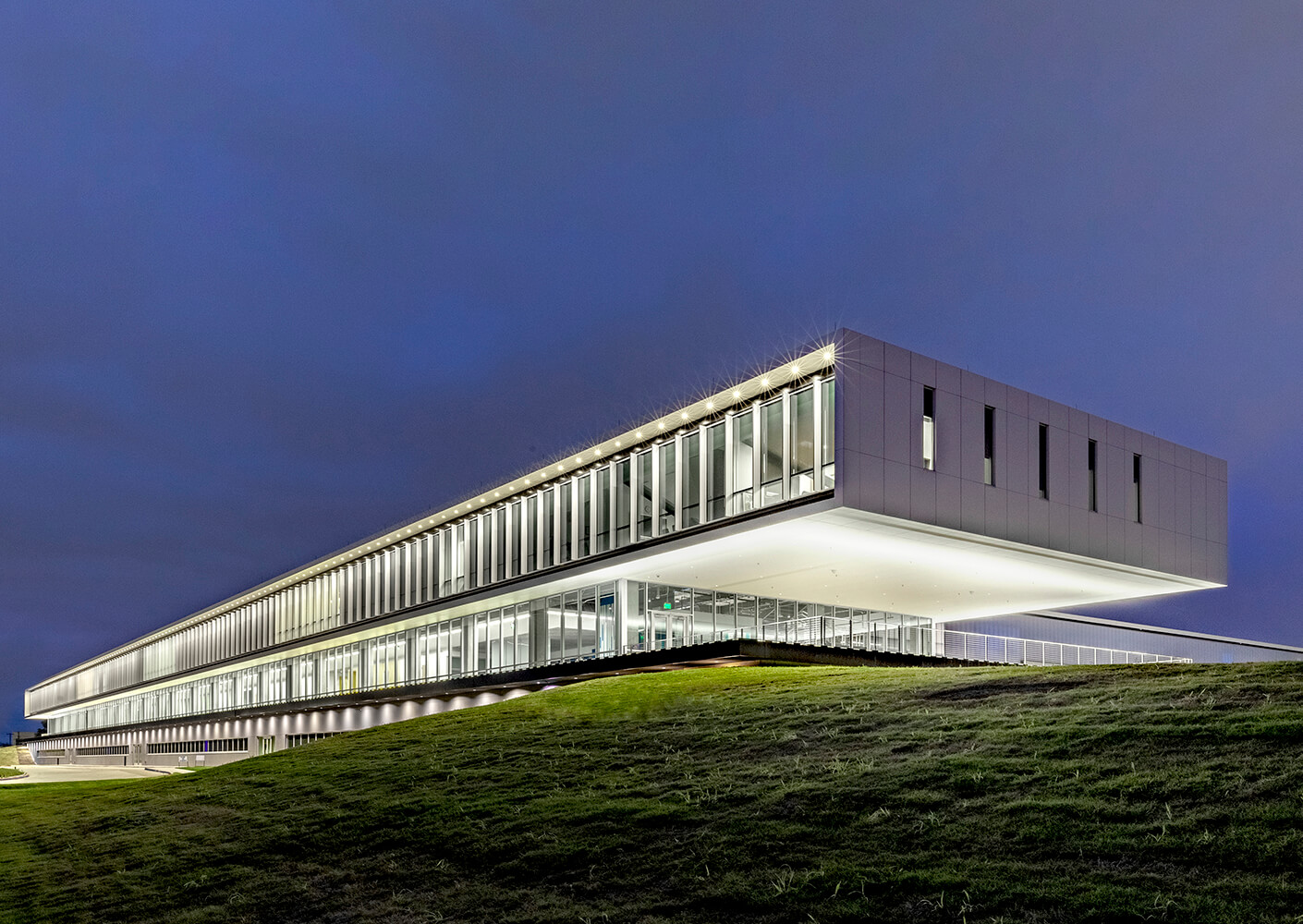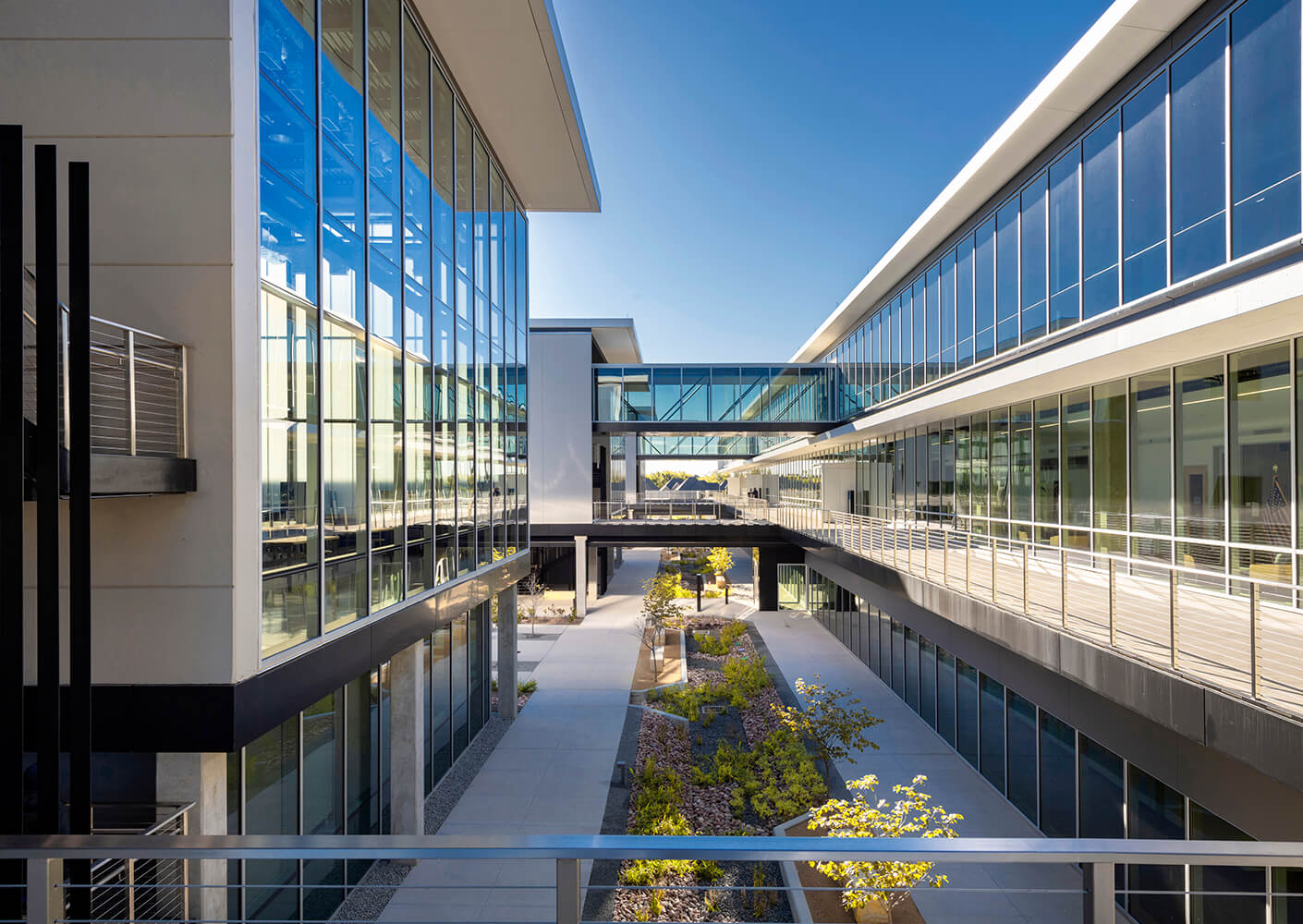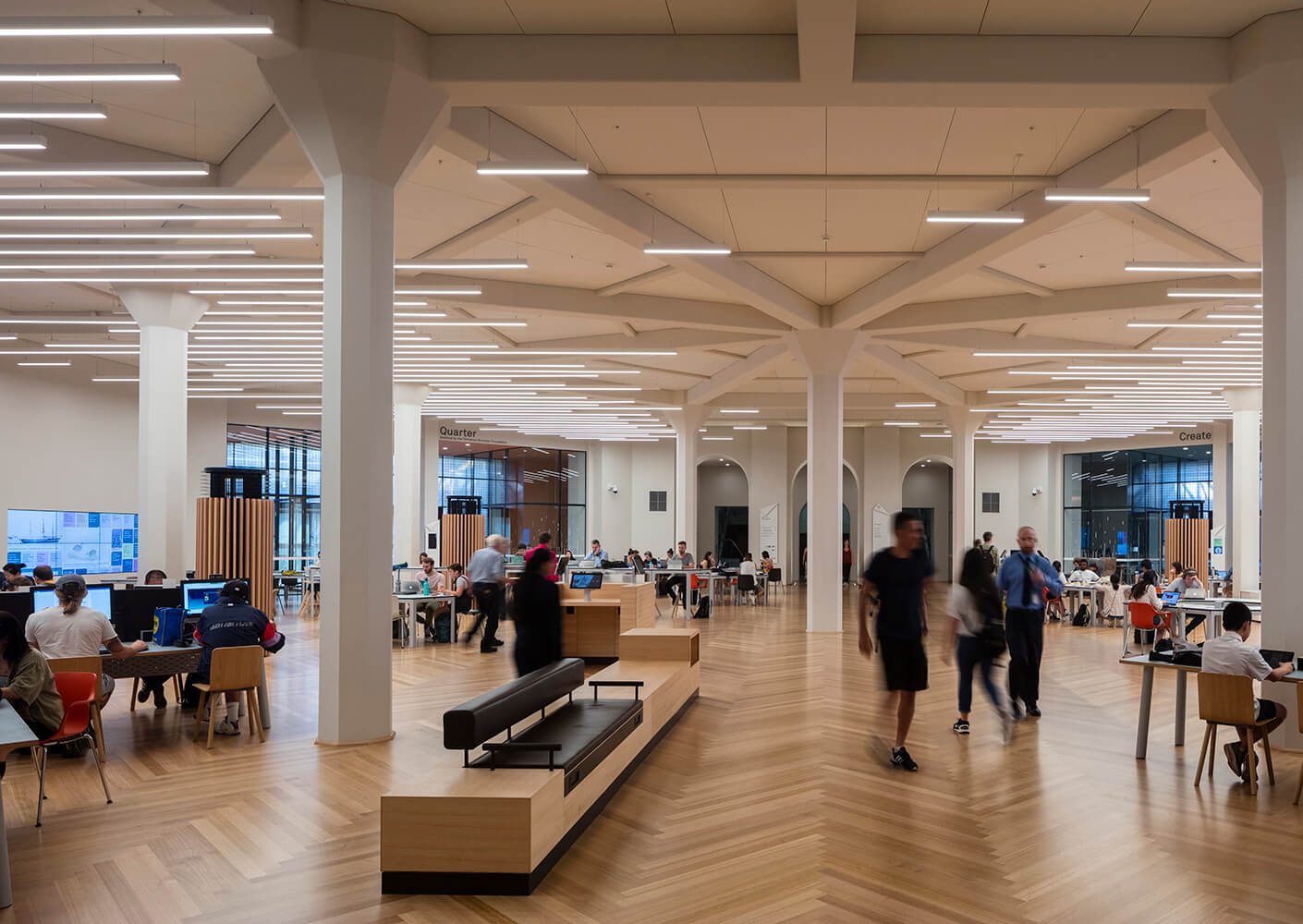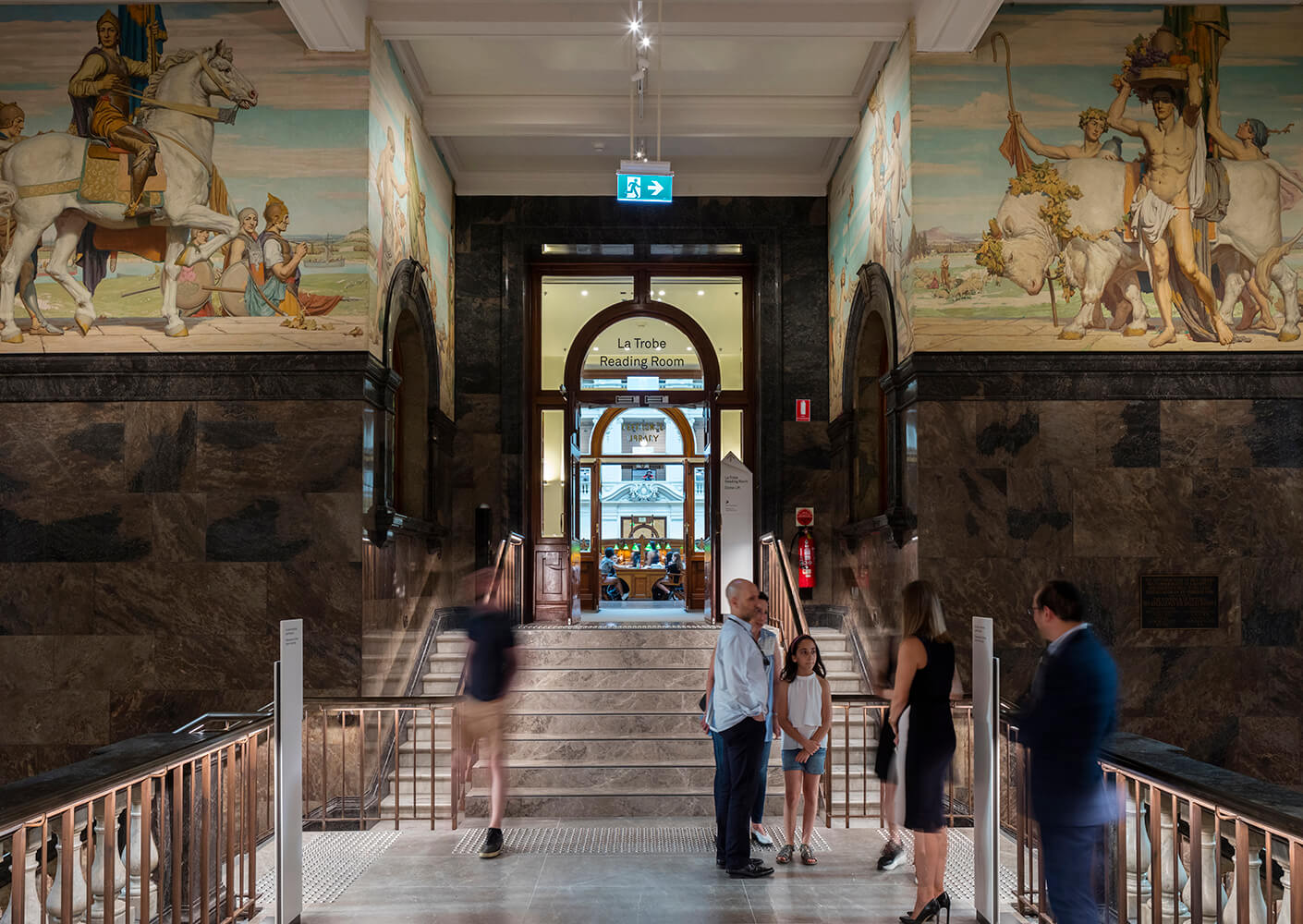University of Virginia University Hospital Expansion
Charlottesville, Virginia
In early March 2020, with the COVID-19 crisis looming, the University of Virginia (UVA) Medical Center knew it needed to prepare quickly for a possible surge of patients. The hospital’s bed tower, which was then in the final stages of construction, was originally scheduled to open in June.
Through grit and resourcefulness, we carried out an enormous feat of immediately refitting 84 patient rooms to accommodate COVID-19 disease patients within just three weeks. Now open, the UVA University Hospital provides an enhanced and a more dignified experience through patient rooms that cater to individual needs, biophilic design strategies, and a focus on well-being.
Shenzhen Waste-to-Energy Plant
Shenzhen, China
Apocalyptic skies from rampant wildfires, rising sea levels, weather extremities—that’s only scratching the surface of observable climate change impacts. Now, the world’s largest waste-to-energy plant gives us hope for mitigating at least some of these effects.
Designed by our Schmidt Hammer Lassen colleagues in Shanghai, the facility handles waste in a city that produces 15,000 tons of it per day, while also generating solar energy. The public is invited into the plant through a landscaped park as a way to educate citizens, government leaders, and businesses to reduce refuse through greater awareness, exhibitions, and research.
SoLo
Soo Valley, British Columbia
In regard to tackling climate change on a micro scale, this mass timber home incorporates energy storage solutions to eliminate the use of fossil fuels from operation. As an off-grid home, it is fully self-sufficient with systems to collect and treat drinking water and process wastewater. The net-zero energy building sets a new standard for sustainable design and construction.
Camp Lakota
Frazier Park, California
After a 2010 fire that devastated a Girl Scouts site at Camp Lakota, we had the opportunity to rebuild it with minimal disruption to the environmentally sensitive landscape. We designed the mass timber cabins to “float” above the forest ground, leaving the earth undisturbed. To support a low carbon footprint, the completed cabins and dining hall use passive systems for energy-efficient cooling and heating. The new Camp Lakota compliments the beauty of the serene, forested site, encouraging young generations of Girl Scouts to regard nature as an integral part of our planet.
Destination Crenshaw
Los Angeles, California
The U.S. has been facing a reckoning over the social injustices that underpin the country’s racially fraught history. We’ve been taking actionable steps toward justice, equity, diversity, and inclusion in everything we do—including the ways in which we design, and for whom we design.
Destination Crenshaw is one example. The 1.3-mile-long, first-of-its-kind outdoor arts and culture museum broke ground in February 2020 as the nation’s largest celebration of African American contributions to world culture. Located in L.A.’s historically Black neighborhood, Crenshaw, Destination Crenshaw will celebrate the long-standing reputation of the neighborhood as a creative incubator, as well as Black L.A.’s impact on popular culture and social change.
Importantly, the project is the community’s response to the city’s bisection of the neighborhood with a light rail to and from LAX: The railway runs above ground only in the Black community; everywhere else, it’s underground.
Collin College Technical Campus
Allen, Texas
Trade and vocational schools, like Collin College demonstrate that skilled labor continues to play a critical role in the U.S. and global economies. As demand for skilled trade workers increases, Collin County community leaders and educators believe that advanced manufacturing training will build economic resilience both locally and nationally.
We designed this new technical training center to support a range of programs, from health sciences to automotive repair, while emphasizing well-being through daylighting and a defined sense of place. The facility also offers continuing education opportunities for corporations and workforce partnerships.
State Library Victoria
Melbourne, Australia
Many public libraries closed as a result of the pandemic. But even before COVID-19, there was much speculation about their place in an increasingly digital world. Are libraries destined to become obsolete since information is so readily available online? We argue no.
Case in point: Australia’s oldest and largest public library, which demonstrates that beautifully designed libraries will always have an important place in modern human society. Our Denmark studio, Schmidt Hammer Lassen, recently renovated this historic place to support community connection and knowledge sharing, even in an age of the Internet of Things (IoT). The library’s role as a custodian of the past and a curator of the future is vital to contemporary learning.
